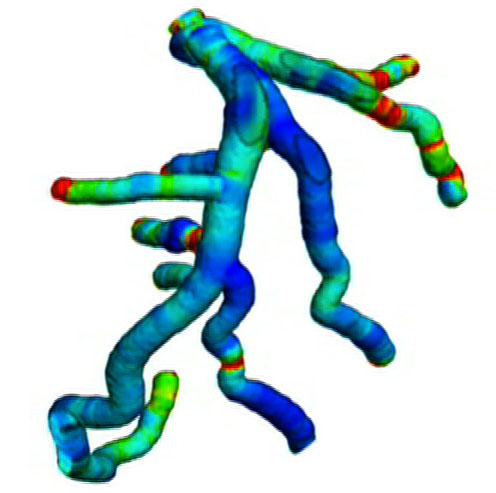News
Amanda Peters, a doctoral candidate and researcher in Applied Physics at the Harvard School of Engineering and Applied Sciences (SEAS) has been selected to receive a George Michael Memorial High-Performance Computing (HPC) Fellowship.
The fellowship honors two Ph.D. students annually for academic excellence and research potential in the areas of high-performance computing, networking, storage, and analysis. It is awarded by the Association of Computing Machinery (ACM), the IEEE Computing Society, and the Supercomputing (SC) Conference series.
Peters’ research in the Multiscale Hemodynamics Lab at Seas focuses on applications of massively parallel computing. She works with supercomputers that can perform hundreds of thousands of calculations simultaneously, resulting in an extremely fast processing speed.
The technology enables her to develop systems that can visualize complex, detailed processes like evolution and fluid dynamics.
The award was announced last week at the SC10 conference inNew Orleans. She will receive a $5,000 stipend for a year of graduate studies.
“Amanda has been doing great work in computational fluid dynamics, using her experience in parallel computing and developing new skills in high-performance and hybrid computing platforms,” says Efthimios Kaxiras, John Hasbrouck Van Vleck Professor of Pure and Applied Physics, who is Peters’ adviser at SEAS.
“She shows exceptional promise to become one of the leaders of a new generation of scientists who will endeavor to solve major societal problems using computation in innovative ways and on an unprecedented scale.”
Peters was also a finalist, with several colleagues, for the ACM’s Gordon Bell Award, which recognizes outstanding achievements in applications of parallel computing to problems in science and engineering.
In collaboration with eight other SEAS affiliates and researchers at European institutions, she had developed a simulation of human arterial blood flow in the Multiscale Hemodynamics Lab. Simone Melchionna, a research scientist at SEAS, presented the research at SC10.
"The end goal of our work on the multiphysics simulator is to create a tool that can be used by doctors on an everyday basis," says Peters. "With that in mind, we'd like to leverage graphics processing units (GPUs) so that we can start creating a platform that doctors could have in their offices."
Peters won another award earlier this fall: she has been selected to receive a $2,200 travel grant that will allow her to attend the Pan-American Advanced Studies Institute (PASI) in Valparaíso, Chile, in January 2011. The topic this year will be “Scientific Computing in the Americas: The Challenge of Massive Parallelism.”
At PASI, she hopes to gain more experience with GPU computing and learn about optimization strategies and available tools.
Peters earned a B.A. in physics and computer science from Duke University in 2005. Prior to beginning her Ph.D. studies at Harvard, she worked for four years as a software engineer on IBM’s Blue Gene project, and spent a year as an intern at MIT Lincoln Laboratory.
Visualizing Health

3D surface visualization of a patient's coronary artery showing endothelial shear stress mapped in color. Photo courtesy of the Multiscale Hemodynamics Lab at SEAS.
Cutting-edge science delivered direct to your inbox.
Join the Harvard SEAS mailing list.
